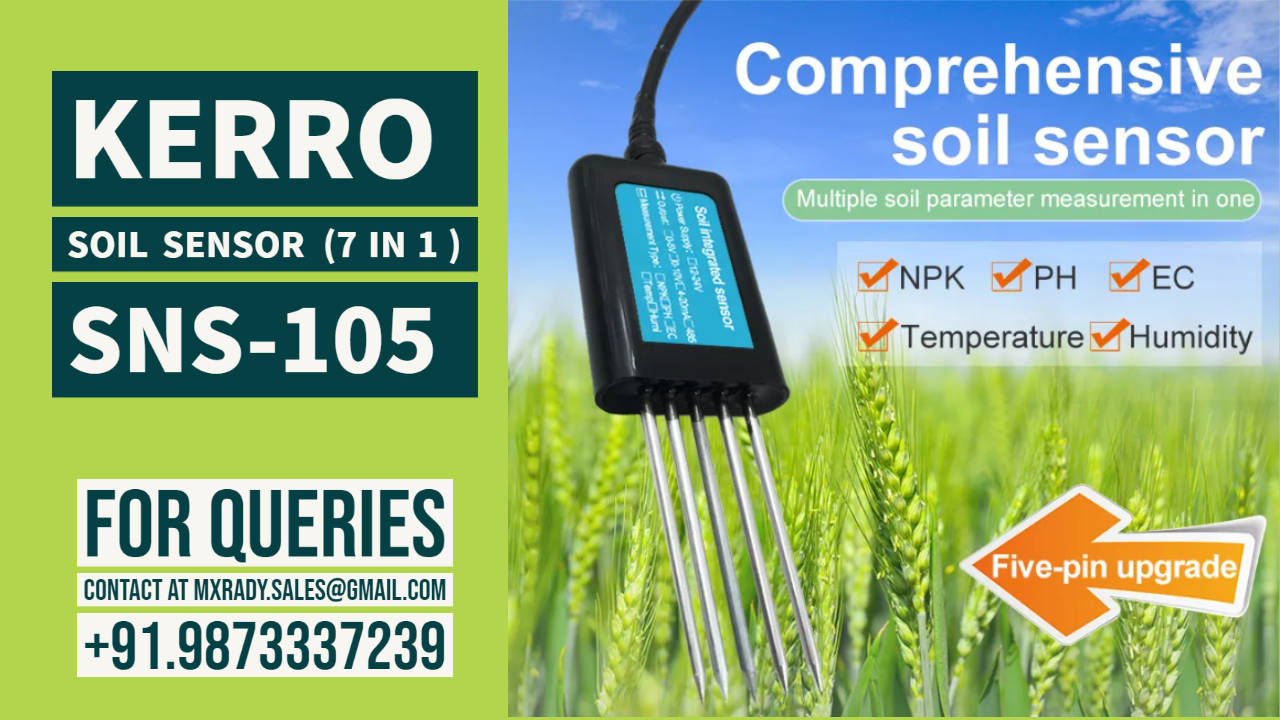NPK Stands for Nitrogen, Phosphorus, and Potassium. The soil NPK sensor is designed for detecting the content of nitrogen, phosphorus, and potassium in the soil.
Determining the fertility of the soil, and facilitating the evaluation of the soil condition by the customer system. The product can be widely used in rice fields, greenhouse cultivation, rice, vegetable cultivation, orchard nursery, flowers, and soil research.
The soil NPK SENSOR is suitable for detecting the content of nitrogen, phosphorus, and potassium in the soil, and judging the fertility of the soil. Thereby facilitating the systematic evaluation of the soil condition. Can be buried in the soil for a long time, resistant to long-term electrolysis, corrosion resistance, vacuum potting, and completely waterproof. Soil npk sensors are widely used in soil nitrogen, phosphorus, and potassium detection, precision agriculture, forestry, soil research, geological prospecting, plant cultivation, and other fields.


How to use Soil NPK Sensor?
Measurement location, avoid rocks and ensure that the steel needle does not touch hard objects.
Throw away the surface soil, according to the required measurement depth, and maintains the original tightness of the soil below.
Hold the sensor vertically and insert it into the soil.
Do not shake left and right.
It is recommended to measure multiple times for average value within a small range of a measuring point.
Features of KERRO Soil NPK Sensor
- Simple to use
- Few operation steps, fast measurement, no reagents, and unlimited detection times.
- High measurement accuracy, fast response speed, and good interchangeability.
- The electrode is made of specially treated alloy material, which can withstand strong external impact and is not easy to damage.
- Completely sealed, resistant to acid and alkali corrosion, and can be buried in soil for long-term dynamic testing.
- The probe plug-in design ensures accurate measurement and reliable performance.
Visit KERRO Soil NPK Sensor for more information.


Excellent blog post. I certainly love this website. Keep it up!